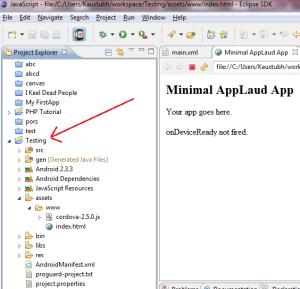How to develop an Android App
Android is an incredible OS and developmental environment. The SDK and tools are free, all the documentation is on the web, and you don’t have to buy an extraordinary mobile or register your machine online with hefty developmental fees. Indeed, because of the exact smooth and practical emulator that accompanies the Android SDK, you don’t even have to claim an Android-controlled gadget (not that I propose discharging an application without running it on true mobile).
There are more tutorials on the Internet for setting up an Android advancement environment. What’s more not just are there similarly as numerous exercises for composing an Android form of the respected “Hello World!” program, however there is really a wizard incorporated with the Android Eclipse module that will create it for you.
Yet in spite of the wide accessibility of data and a low-to-no start-up cost, I still hear protests from new adopters, coders, developers and encountered designers struggling with Android, struggling with just knowing where to begin. Setting up an environment and composing a “Hello World” application is immensely not the same as comprehension in Android, and the interesting approach is needed to writing an application that does something really useful. I get asked constantly what an Android code/project looks like, how the layout/design functions, and what are the best practices for executing Android applications.
My objective with this guide is to answer a percentage of the normal inquiries, and likewise open a discourse with mobile developers and coding lovers. Maybe on the whole we can make the habit of making that first executioner application somewhat smoother.
What is Android?
Consistent with Google’s official documentation, Android is a working framework, as well as rather it is a programming stack. Part of that stack is a working framework (a forked Linux piece to be correct), however Android is additionally situated as a middleware, center provisions, and a SDK that ties everything together. Android furnishes all the needed parts required to run the unit, a base level of purpose, and a greatly advanced virtual machine for running a variant of Java-byte code. It is in this Java-based layer that unbiased gathering provision designers are given the devices and the important environment to expand the usefulness and suitability of Android-fueled purchaser mechanisms through the radiant universe of applications.
What software do I require?
Unlike numerous other situations, you don’t have to buy exorbitant software and programming to begin composing your first Android application. Android improvement might be carried out on a Mac, a Windows PC, and practically any quality of Linux. You require Eclipse, the Android SDK, and the ADT Plugin. The greater part of these are free.
Assuming that you have an Android-fueled tablet, the Allow USB Debugging setting in the setup menu will empower you to join the unit to your nature, download code to it, and use the debugger. Assuming that you don’t yet have an Android-fueled gadget, you can utilize the emulator that accompanies the SDK.
How would I set up my nature?
For my cash, the establishment control put together by the people at Google is presumably the most far reaching and heartily redesigned on the net. There you can find documentation for instituting everything you require, for whichever have working framework will house your nature’s domain.
What does an Android app project look like?
When you make another Android app utilizing the Adt plugin, an framework is made for you. This structure serves to keep your layout cleanly differentiated from your source code, and it makes it simple to uphold things like internationalization out of the container. Underneath is a run of the mill Android venture progression with a concise description of every hub.
src- : This is the organizer where our Java classes live.
gen- : This organizer holds envelopes that get manufactured for us immediately by the toolset. A great sample of what you will find in here is the Android-particular record R.java. This document is redesigned by the framework at whatever point we add another id to one of our layout assets.
Android x.x- : This organizer is the reference to the Sdk rendition our application is utilizing. This is something we get to arrange when we make the undertaking.
Assest folder : The stakes organizer gives a vault for crude assets. for instance, if your application plays sound impacts, putting the wave documents in the stake envelope makes those assets accessible to the requisition at runtime. You may suppose it might be an exceptional thought to incorporate your bitmap pictures in this organizer too, yet you will study in a minute that Android furnishes a particular set of envelopes for realistic assets, and utilizing those organizers hold certain focal points.
bin :This is the place Eclipse will put your accumulated apk and hex files.
res- :The res envelope is exceptionally essential, however it doesn’t hold any documents straightforwardly. The res organizer holds an arrangement of subfolders.
res/drawable: There is an arrangement of drawable envelopes. The organizer names speak to the screen thickness (as an illustration res/drawable-hdpi holds all your picture assets for high-determination apparatuses). Provided that you measure your realistic assets rightly and incorporate them in the right organizer, the working framework will choose the best conceivable picture at runtime, contingent upon the size and thickness of the client’s showcase.
res/layout: The layout envelope is the place you utilize Android’s Xml meta-dialect to portray how your screens ought to be shown. As the drawable envelope, the layout organizer could be utilized to speak to various assets, hence representation and scene layouts, permitting the working to pick the most fitting choice at runtime.
res/values: The qualities envelope is utilized generally for string assets. The substance comprise of key-worth sets, and the envelopes might be adjusted (e.g., qualities Eng) to underpin different dialect prompts at runtime.

